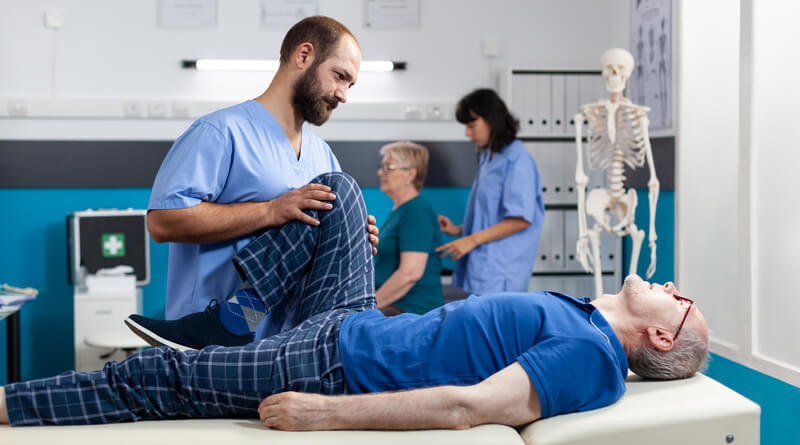The Importance of Accurate Patient Identification: Ensuring Quality Care and Patient Safety

Patient identification is a crucial aspect of healthcare. It involves the process of accurately identifying and verifying the identity of a patient, typically using identifying information such as their name, date of birth, and medical record number. Ensuring accurate patient identification is essential for providing quality care and maintaining patient safety.

Accurate patient identification is necessary to ensure that patients receive the correct treatment and medications. Without it, there is a risk of medical errors and misdiagnosis, which can have serious consequences for the patient’s health. Incorrect patient identification can also lead to financial consequences for both patients and healthcare providers, as it can result in unnecessary or duplicate tests and treatments being performed in healthcare system.
In this article, we will delve deeper into the importance of accurate patient identification in healthcare and the strategies that can be employed to improve identification processes. By understanding the importance of this fundamental aspect of healthcare, we can work to ensure that every patient receives the highest quality of care.
The consequences of failing to properly identify patients
One of the most significant consequences of incorrect patient identification is the risk of medical errors and misdiagnosis. When a patient is misidentified, their medical history and relevant information may not be readily available to healthcare professionals, leading to a lack of critical information needed for accurate diagnosis and treatment. This can result in inappropriate or delayed treatment, and in severe cases, can even be life-threatening.
For example, if a patient with a severe allergy to a particular medication is misidentified and given that medication, they may suffer a severe allergic reaction that could potentially be fatal. Similarly, if a patient with a serious medical condition is misidentified and not treated promptly, their condition may worsen, leading to serious complications or even death.
In addition to the potential harm to the patient, incorrect patient identification can also result in financial consequences for both patients and healthcare providers. Patients may be charged for unnecessary or duplicate tests and treatments, leading to unnecessary out-of-pocket expenses. For healthcare providers, incorrect patient identification can lead to the duplication of efforts and resources, resulting in wasted time and money.
Implementing biometric healthcare solutions, such as touchless biometric systems, can help to mitigate the risk of incorrect patient identification. These systems use unique biometric characteristics, such as a person’s facial features or iris scan, to accurately identify patients and protect their data. This can help to prevent unauthorized access and the creation of duplicate records, improving patient safety and reducing the financial consequences of incorrect identification.
Overall, it is clear that the consequences of failing to properly identify patients can be significant and far-reaching, highlighting the importance of ensuring accurate identification processes in healthcare.
Strategies for improving patient identification processes
One effective strategy for improving patient identification processes is the use of unique patient identifiers, such as a medical record number or touchless biometric technology. Unique patient identifiers allow healthcare professionals to quickly and easily access a patient’s medical history and relevant information, reducing the risk of errors and misdiagnosis.
Biometric healthcare solutions, such as touchless biometric systems using facial recognition or iris scans, offer a secure and efficient way to identify patients. These systems use biometric characteristics, such as a person’s facial features or iris, to uniquely identify an individual. This helps to prevent data corruption and unauthorized access, as well as avoid the creation of duplicate records.
In addition to the use of unique patient identifiers, it is also important to verify patient information at each point of care. This includes verifying a patient’s identity and relevant information, such as their name, date of birth, and medical record number, at every encounter with a healthcare professional. This helps to ensure that the correct information is being used to provide care and treatment.
Finally, training for healthcare professionals on proper identification procedures is crucial for improving identification processes. This can include training on the use of unique patient identifiers, such as touchless biometric systems using facial recognition or iris scans, as well as procedures for verifying patient information at each point of care. By ensuring that healthcare professionals are knowledgeable and trained on proper identification processes, we can further improve the accuracy and effectiveness of patient identification in healthcare.
What is an effective and safe way to identify a patient?
Identifying patients accurately and safely is essential for providing effective healthcare. Traditional methods such as using identification cards or wristbands can be prone to errors and may not adequately protect patient data from unauthorized access. In recent years, biometric healthcare technologies have emerged as an effective and safe way to identify patients.
Biometric technologies use unique physical or behavioral characteristics to identify individuals. In the healthcare setting, biometric technologies can be used to verify a patient’s identity and prevent unauthorized access to their medical records. One example of biometric healthcare technology is touchless biometrics, which uses sensors to capture a person’s unique characteristics without requiring physical contact. This can help to prevent the spread of infections and promote patient safety.
Touchless biometric technologies can include facial recognition, voice recognition, and iris scanning. These technologies are highly accurate and can prevent duplicate records, which can occur when a patient is registered under multiple names or with incorrect information.
In addition to providing accurate and safe patient identification, biometric healthcare technologies can also protect patient data from unauthorized access. By using unique characteristics to verify a patient’s identity, these technologies can help to prevent medical identity theft and protect sensitive medical information.
Overall, biometric healthcare technologies offer an effective and safe way to identify patients and protect their data. By implementing these technologies, healthcare organizations can improve patient safety, prevent unauthorized access to medical records, and prevent the creation of duplicate records.
Conclusion
In conclusion, the importance of accurate patient identification cannot be overstated. Ensuring that patients are correctly identified is essential for providing quality care and maintaining patient safety. From reducing the risk of medical errors and misdiagnosis to preventing financial consequences for both patients and healthcare providers, the benefits of accurate patient identification are numerous.
As technology continues to advance, there is an increasing trend towards the use of biometric healthcare solutions, such as touchless biometric systems, to improve patient identification processes. These systems offer a secure and efficient way to identify patients, protect patient data, and prevent unauthorized access. Additionally, biometric systems can help to prevent the creation of duplicate records, further improving patient safety.
It is clear that the need for ongoing efforts to improve patient identification processes in healthcare is vital. By implementing effective strategies, such as the use of unique patient identifiers and training for healthcare professionals, we can work towards ensuring accurate patient identification and ultimately, improving the quality of care and patient safety.









Leave a Reply
Want to join the discussion?Feel free to contribute!